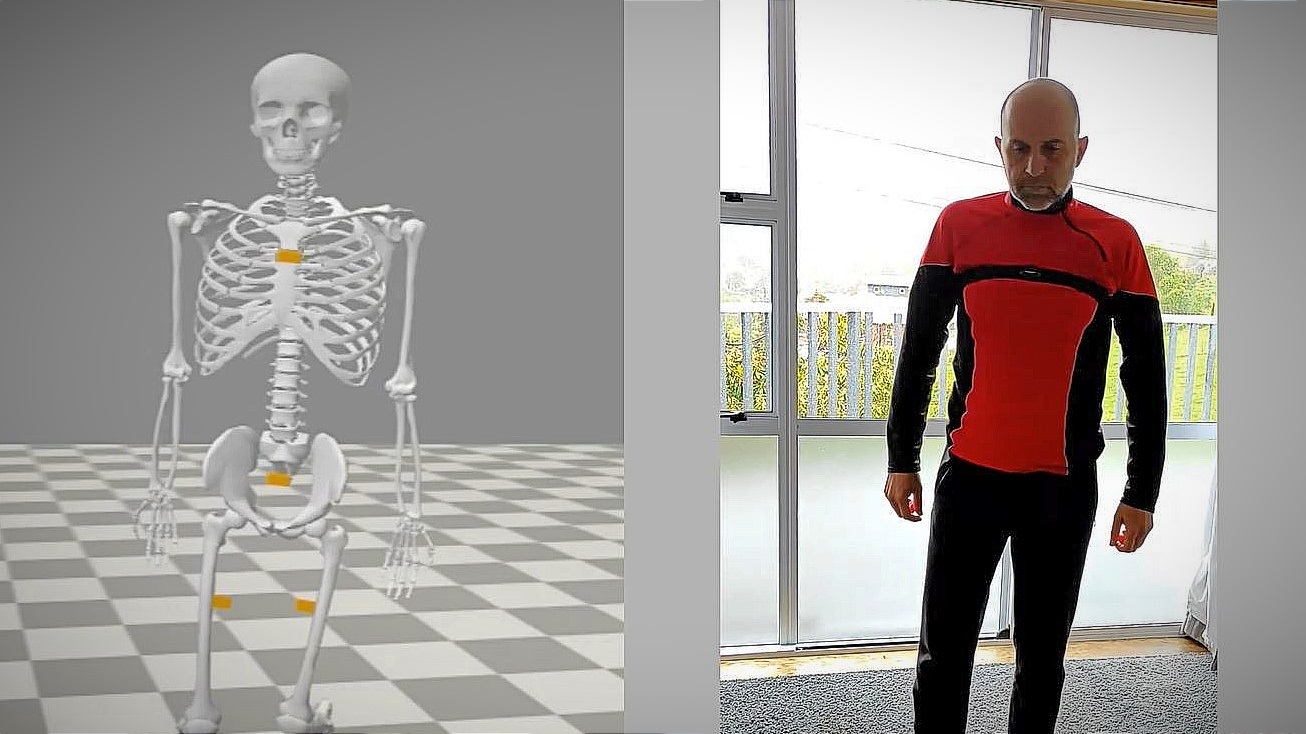New Research Projects Study Biathletes and Connect Movesense with OpenSim

Movesense Academic Program is an initiative of Movesense and its development partner Kaasa Solution to support scientific research projects with high quality sensors and data collecting tools for physiology and biomechanics.
New projects are invited to the program based on applications. Two new sports-related projects joined the program in Q1 2023:
Training Monitoring in Adolescent Biathletes
Mid Sweden University, Swedish Wintersport Research Centre, Östersund
Heart rate monitoring is commonly used as a variable for training load. However, sometime it is not accurate enough to detect changes in training workload, especially in outdoor training and during biathlon shooting training. This study will compare the planned and performed training sessions using different types of training load monitoring: heart rate, accelerometer and perceived exertion.
Researchers will use Movesense sensor data to calculate the average net force as an external training load variable, and compare that with perceived exertion and the internal training load measured with heart rate. This will help understand how different training forms and modes of exercise differ from each other in terms of training load.
The study aims at deepening the knowledge of training load in general, and give better understanding and tools for coaches for planning training load of the athletes for optimizing their endurance performance. The is also expected to bring new knowledge on how young athletes should train for achieving top-level performance later in their career, an area that has very little scientific evidence in most sports, including biathlon.
Creating a Biomechanical Model using OpenSim and Movesense Sensors
University of Otago, Dunedin, New Zealand
This multidisciplinary research project aims to develop an integrated human activity measurement system for sport and general health tracking applications. Researchers will develop a user interface to allow using Movesense sensors with OpenSim/OpenSense, a free open source software tool for biomechanics modelling and movement analysis with inertial measurement unit data.
By adding to OpenSim the capability to collect high-quality physiology and biomechanics measurements in the field with Movesense sensors, the project team aims to disrupt conventional thought on exercise science lab space requirements. The integration unlocks powerful analysis and visualization tools for biomechanical data (featured image) and heart rate and respiration metrics. The result is a low-cost, portable sports lab that enables more sustainable space use and ecologically valid studies.
In the study, sensors will be attached to various body segments to imported to OpenSim. OpenSim does not provide any tools for creating calibration and model files with IMUs, so this development will be beneficial to the whole biomechanics community.
The team also plans to develop numerous biomechanics and physiology applications, including real-time feedback on exercise intensity (relative to ventilatory thresholds), estimation of repetitive tissue loading, technique and performance analysis. These metrics will give feedback to athletes and clinical populations about internal and external workloads and performance during in-field tasks, e.g., training or everyday tasks outside the laboratory. Identified usage areas of the solution include
Injury Prevention and recovery: The biomechanical models consisting of several body segments allow tracking training workloads in the field.
Efficiency and movement dynamics: Integrating physiology and biomechanics data will enable the development of new parameters related to efficiency and economy in sport.
Elite sport: The ability to study the relationship between multiple body systems allows the model to cover a wide variety of sports for high-performance analysis.
Cardiology: The high ECG accuracy opens up the possibility of studying heart activity over long periods of time, even during exercise (e.g., disease prediction and training adaptation).
Health: The tools and algorithms created will allow the model to study health in the general population, not only in sports.
The outcome of the project will be highly interesting for the whole Movesense network as it will bring new, useful, open source analysis tools for anyone using Movesense sensors for measuring human physiology and biomechanics.
Welcome aboard!
Movesense team warmly welcomes the projects to the program. They have great potential to bring new tools and insights into training analysis that will potentially benefit all Movesense sensor users.
Read more about the wearable, programmable Movesense heart rate and movement sensor.
To learn how you can use Movesense sensors for your own commercial or research projects, don’t hesitate to get in touch with our experts:
Views: 153
